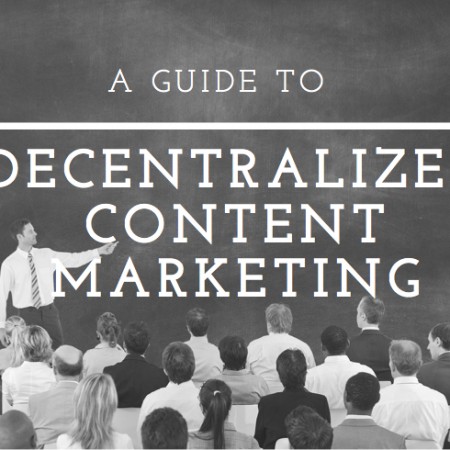Why Today is the Era of the Online Content Writer
Anyone who has ever studied English or writing knows just how hilarious people think they’re being when they ask “What in the world are you ever going to do with that?” It’s long been considered a source of fun and frivolity to pick on writers for their delicate sensibilities and their seemingly useless talents and training…until now. Right now, you and I are living in the era of the copywriter as the online content writer, or SEO copywriter… and it’s arguable that there are few other skills that are in such high demand right now. That’s right: high demand. Copywriting is a broad profession that embodies many things and, now more than ever, people need copywriters to make their online businesses go around, to help their pages show up in search results, to execute good SEO, and to master the written word in order to provide value and excitement for readers. The Evolution of the Copywriter To The Online Content Writer The role of the copywriter as it is today, with many jobs in online content writing specifically, has metamorphosed hugely since the inception of advertising. Back in the ‘30s and ‘40s, copywriters were charged with developing ad copy people would love, which typically meant it was full of puns, over-explaining, and outrageous exaggerations (like the 1937 Camel Cigarette ad whose headline was “for digestion’s sake – smoke Camels!”). In the ‘60s and ‘70s, the job of copywriting began to change when Bill Bernbach, the first man to put copywriters and art directors together on projects, created a new-age copy creation team that was dedicated to producing ads that were more honest, stark, and open. Throughout the ‘80s and the ‘90s, copywriting continued to change: long copy dominated advertising and visuals became more important but in the year 2000, it all began to change. Suddenly, visual gags were all the rage and body copy all but died altogether. Throughout the next several years, copywriting became a spammy profession that was focused on cramming as many keywords into a piece of content as possible or building sneaky, unethical links. Thanks to the pressures of the market and the overwhelming trend of copy in general, copywriting became an environment in which crappy content was king and black hats were in vogue. Today, however, copywriting is a high-brow practice that requires extensive knowledge of SEO, marketing, and a wide variety of writing tactics that can help businesses put their best face forward. The Changing Tides of Copywriting: Google, Value, and Other Factors The reason for the evolution of online content writing that has taken place over the last decade has to do in large part with Google. Over the years, Google has released a series of updates aimed at targeting so-called “black-hat SEO” practices, such as keyword stuffing, doorway pages, invisible text, or page swapping, and rewarding sites that feature high-quality, original, valuable content. These changes have made it nearly impossible for crappy sites to scrape by and, as such, the algorithm updates have created a brand new demand for talented, knowledgeable copywriters that know how to produce great site rankings through skill and technique rather than spammy, dark-side practices. As Google’s algorithm updates have only continued to press forward, this need has become more and more pronounced and, nowadays, it’s impossible for a site to rank or survive without a team of talented copywriters and other marketing professionals on staff. 4 Important Things Copywriters Need to Know Despite its great demand right now, very few people know what copywriters actually do. We’re confused with journalists and, when the profession comes up at a dinner party, are often regarded with raised eyebrows and a deer-in-the-headlights sort of “Ohhhh” from the person who mistakenly asked what it is that we do. Nobody knows what copywriters do and that’s because we operate largely behind the scenes. Despite this reality, copywriters play a large part in making the digital world go around and there are dozens of things copywriters need to know in order to do their jobs well. Here are just a few: 1. How to Write Electrifying Headlines What makes you decide to read an article as you scroll through your Facebook feed? If you’re like most social media users, it’s the headline or the featured image or some combination of both. Little did you know that copywriters have a hand in both of those things, but specifically the headline. One of the most important jobs a copywriter has is to create magnetic headlines that draw audiences in and make them want to click on an article. This requires a little bit of a magic, a little bit of technical skill, and a whole lot of technique. 2. How to Use SEO Components in Writing Copywriters are asked to create great content that wants to go viral and, aside from writing clearly and providing value to readers, there’s only one way to do this: SEO. SEO stands for “search engine optimization” and is the practice by which writers make content easy to read for both people and search engines. SEO entails everything from keyword usage to meta titles and descriptions and is an important part of making sure you can find exactly what you’re looking for online. Additionally, good SEO helps sites get their content out there in front of consumers and makes sure that google users can always find what they’re looking for when they enter a search queries in the search box. 3. How to Provide Value to Readers People use search engines to ask and answer questions and one of the most important jobs of a copywriter is to ensure that the content that pops up in response to search queries is valuable, useful, and helpful. This means that copywriters must be able to anticipate reader questions and answer them from an empathetic and informative standpoint. They must also be able to cite sources, provide trustworthy research, include visuals for reference, and do everything in their power to ensure that the reader’s questions are answered … Read more









